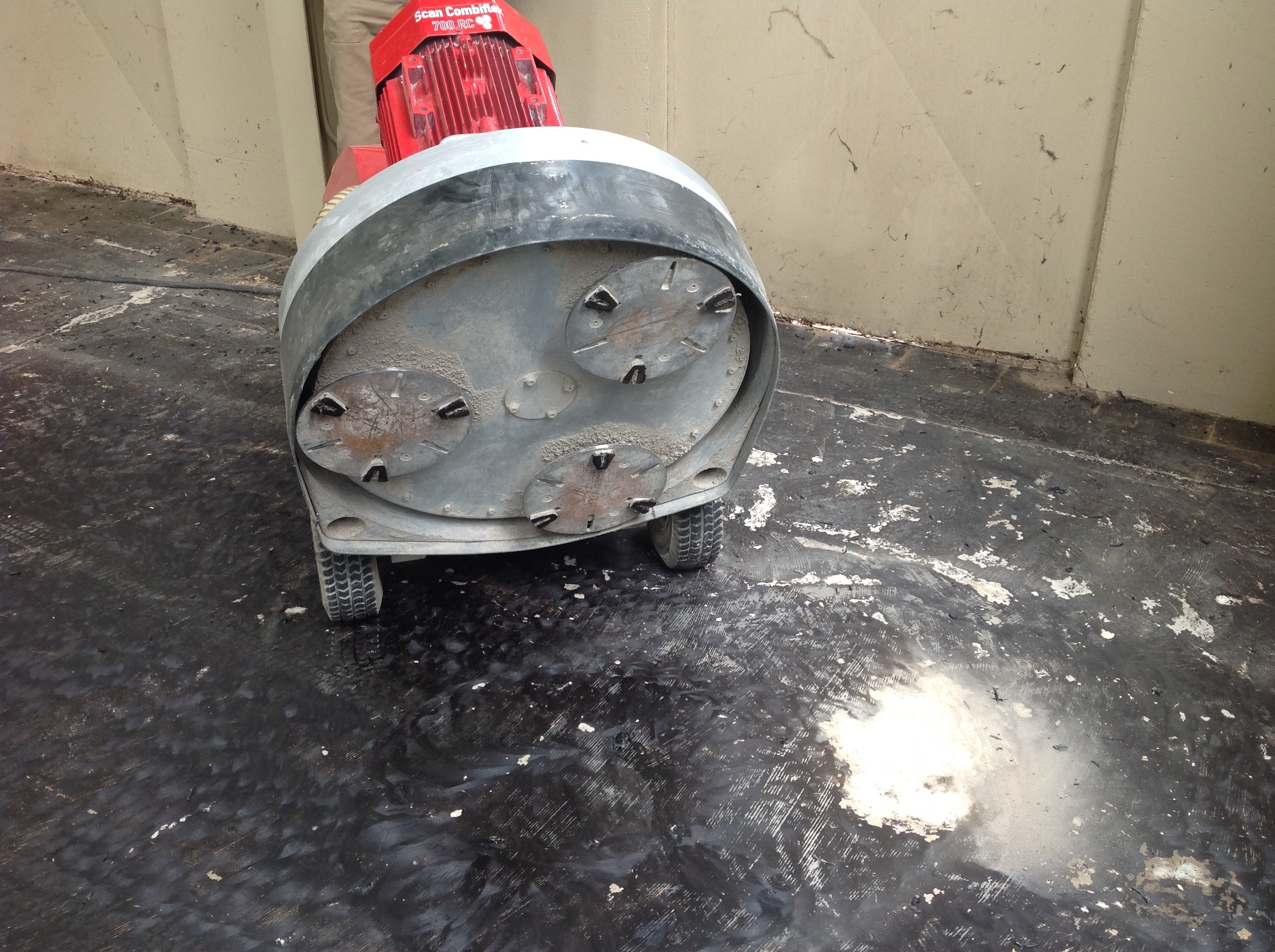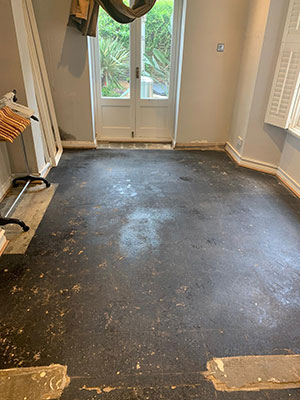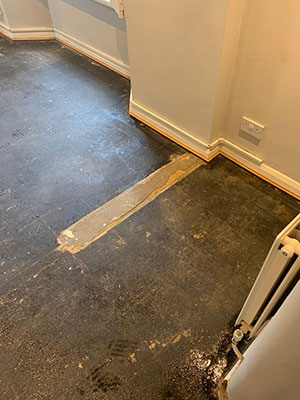The Impact of Bitumen on Concrete Floors
Bitumen is a common material used in various construction projects, including roads, roofs, and waterproofing. However, when bitumen comes into contact with concrete floors, it can cause significant damage and staining. Understanding the impact of bitumen on concrete floors is essential for effective removal and maintenance.
- Chemical Reaction: When bitumen comes into contact with concrete, it forms a strong bond due to a chemical reaction. This bond can penetrate the porous surface of the concrete, making it challenging to remove. The longer the bitumen remains on the concrete, the more difficult it becomes to eliminate.
- Staining and Discoloration: One of the primary concerns with bitumen on concrete floors is staining. Bitumen can leave behind dark and unsightly marks, diminishing the aesthetic appeal of the floor. Additionally, the presence of bitumen can cause discoloration, making the floor appear dull and worn out.
- Structural Damage: Apart from the visual impact, bitumen can also cause structural damage to concrete floors. Over time, the chemicals in bitumen can weaken the concrete, leading to cracks, spalling, and deterioration. This can compromise the integrity and longevity of the floor.
- Safety Hazards: Bitumen on concrete floors can create safety hazards, especially in high-traffic areas. The sticky nature of bitumen can cause people to slip and fall, leading to injuries. Additionally, the presence of bitumen can make it difficult to clean and maintain the floor, further increasing the risk of accidents.

Effective Methods for Removing Bitumen from Concrete
Removing bitumen from concrete floors requires the use of appropriate tools and techniques. Various methods can be employed to effectively eliminate bitumen without causing further damage to the concrete. Understanding these tools and techniques is essential for successful bitumen removal.
- Heat Gun: A heat gun is a commonly used tool for bitumen removal. By applying heat to the bitumen, it softens and becomes easier to scrape off the concrete surface. However, caution must be exercised to prevent overheating the concrete, which can cause cracks.
- Chemical Solvents: Chemical solvents can be applied to the bitumen to dissolve it and facilitate removal. Solvents specifically designed for bitumen removal are available in the market. It is important to choose a solvent that is safe for use on concrete and follow the manufacturer’s instructions for effective and safe application.
- Mechanical Scraping: Mechanical scraping involves using tools such as scrapers, chisels, or floor grinders to physically remove the bitumen from the concrete. This method is effective for larger areas or stubborn bitumen stains. Care must be taken to avoid damaging the concrete surface during the scraping process.
- Pressure Washing: Pressure washing is another effective technique for bitumen removal. High-pressure water is used to dislodge and wash away the bitumen from the concrete surface. This method is particularly useful for outdoor concrete areas. However, caution should be exercised to prevent excessive pressure that can damage the concrete.
- Grinding and Polishing: In cases where bitumen has penetrated deeper into the concrete, grinding and polishing can be employed. This method involves using specialized equipment to grind away the top layer of the concrete, removing any embedded bitumen. The floor can then be polished to restore its original appearance.
How to Safely Remove Bitumen from Concrete Floors
Removing bitumen from concrete floors requires a systematic approach to ensure safety and effectiveness. Following a step-by-step guide can help simplify the process and minimize the risk of damaging the concrete. Let’s explore the essential steps involved in safely removing bitumen from concrete floors.
- Preparation: Start by preparing the area for bitumen removal. Clear the floor of any loose debris and furniture. Cover adjacent surfaces and walls with protective materials to prevent damage from the removal process. Ensure proper ventilation in the area to avoid inhaling any fumes or dust.
- Test and Select a Removal Method: Before proceeding, it’s crucial to determine the most suitable removal method for the specific type of bitumen and the condition of the concrete. Consider factors such as the extent of the bitumen, the presence of any sealants or coatings, and the overall condition of the concrete. Based on these considerations, choose the appropriate method discussed in the previous article.
- Apply Heat or Chemical Solvent: If using a heat gun, apply heat evenly to the bitumen, keeping the gun at a safe distance from the concrete. Gradually soften the bitumen, making it easier to scrape off. Alternatively, if using a chemical solvent, carefully apply it to the bitumen following the product instructions. Allow the solvent to penetrate and dissolve the bitumen.
- Scrape or Remove Bitumen: Using a scraper or other appropriate tools, gently scrape off the softened bitumen from the concrete surface. Work in small sections to avoid damaging the concrete. Dispose of the removed bitumen safely according to local regulations.
- Clean and Rinse: After removing the bitumen, thoroughly clean the concrete floor to remove any remaining residue. Use a mild detergent and water to scrub the surface. Rinse the floor with clean water to remove any cleaning solution or loose debris.
- Inspect and Repeat if Necessary: Inspect the cleaned floor for any remaining bitumen or stains. If necessary, repeat the removal process in specific areas where bitumen is still present. Take extra care not to damage the concrete surface during subsequent removal attempts.
- Dry and Evaluate the Results: Allow the concrete floor to dry completely. Once dry, evaluate the results. Check for any remaining bitumen or stains. If the floor is free from bitumen, proceed to the next step. If there are still stains or residue, consider additional cleaning methods or seek professional assistance.
- Apply a Concrete Sealer: To protect the restored concrete floor, consider applying a concrete sealer. A concrete sealer creates a protective barrier that helps prevent future bitumen staining and enhances the appearance of the floor. Follow the manufacturer’s instructions for the application of the sealer.
Strategies to Minimize Bitumen Staining on Concrete
Preventing bitumen staining on concrete floors is key to maintaining their appearance and prolonging their lifespan. By implementing preventive measures, you can minimize the chances of bitumen coming into contact with the concrete surface. Let’s explore some effective strategies to prevent bitumen staining on concrete floors.
Surface Protection: To prevent bitumen from directly contacting the concrete, apply a protective coating or sealant on the surface. This creates a barrier that makes it easier to clean off any accidental spills or splatters of bitumen. Choose a sealant that is compatible with concrete and meets the specific needs of your floor.
Adequate Spill Containment: If working with bitumen in proximity to concrete floors, ensure proper spill containment measures are in place. Use spill trays, absorbent mats, or barriers to contain any spills or drips. This prevents bitumen from spreading onto the concrete surface and causing staining.
Prompt Cleanup: In the event of a bitumen spill or splatter on the concrete, act quickly to clean it up. The longer bitumen remains on the surface, the more likely it is to penetrate and cause staining. Use appropriate cleaning materials, such as absorbent pads or solvents designed for bitumen cleanup, to remove the spill promptly.
Protective Coverings: When undertaking construction or maintenance activities near concrete floors, use protective coverings such as plastic sheets or drop cloths. These coverings act as a physical barrier between the bitumen and the concrete, preventing direct contact and potential staining.
Training and Awareness: Educate personnel and contractors on the importance of preventing bitumen staining on concrete floors. Provide training on proper handling and storage of bitumen to minimize the risk of spills or accidents. Encourage a culture of awareness and responsibility when working with bitumen near concrete surfaces.
Regular Inspections: Perform regular inspections of concrete floors to identify any signs of potential bitumen staining or damage. Early detection allows for prompt action and prevents the problem from worsening. Address any issues promptly to maintain the integrity and appearance of the concrete.
Maintenance and Cleaning: Implement a regular maintenance and cleaning routine for the concrete floors. This includes sweeping or vacuuming to remove dirt and debris that can trap bitumen. Additionally, periodically clean the floors with mild detergents and water to remove any potential contaminants.
Preserving the Integrity of Concrete Floors After Bitumen Removal
After successfully removing bitumen from concrete floors, it is essential to focus on restoration and maintenance to preserve the integrity and appearance of the concrete. Proper care ensures that the floor remains in optimal condition and minimizes the risk of future staining or damage. Let’s explore some key steps for the restoration and maintenance of concrete floors after bitumen removal.
Surface Repair: Inspect the concrete floor for any damage or imperfections caused by the bitumen removal process. Repair any cracks, spalling, or other issues using appropriate concrete repair materials. This ensures a smooth and even surface for subsequent maintenance and prevents further deterioration.
Deep Cleaning: Perform a thorough deep cleaning of the concrete floor to remove any remaining debris, dust, or residue from the bitumen removal process. Use a mild detergent and scrub the surface with a soft brush or mop. Rinse thoroughly with clean water to remove any cleaning solution.
Concrete Stain or Polish: Consider applying a concrete stain or polish to enhance the appearance of the restored floor. This not only provides a decorative element but also adds a layer of protection to the concrete. Choose a stain or polish that is compatible with the type of concrete and desired aesthetic.
Regular Maintenance: Establish a regular maintenance routine to keep the concrete floor in optimal condition. This includes routine cleaning, such as sweeping or vacuuming, to remove dirt and debris. Additionally, periodically perform more intensive cleaning using mild detergents or specialized concrete cleaners.
Protective Coating or Sealant: To further protect the concrete surface, apply a protective coating or sealant after the restoration process. This helps to prevent future staining, moisture penetration, and damage. Choose a product that is specifically designed for concrete floors and follow the manufacturer’s instructions for application.
Preventive Measures: Continue implementing preventive measures to minimize the risk of future bitumen staining. This includes spill containment, prompt cleanup of any spills or splatters, and regular inspections to identify potential issues early on. By staying proactive, you can maintain the integrity and appearance of the concrete floor.
Asbestos Bitumen Glue Adhesive Removal Cost Guide
How to remove black tar adhesive from a concrete floor
How To Remove Bitumen Stains from Pavers and Kerb Edgers
Bitumen Removal – Concept Flooring Technology
Concrete floor with bitumen paint – more bitumen or seal
Old Bitumen Covered Flagstone Floor Restored in Morecambe
Cleaning up Concrete floor covered in Bitumen – Tile Cleaners
Related Posts:
- Applying Concrete Floor Paint
- Non Slip Concrete Floor Sealer
- How To Paint Concrete Garage Floor
- Outdoor Concrete Floor Ideas
- Concrete Floor Covering Ideas
- Cracks In Polished Concrete Floors
- Drylok Concrete Floor Paint Colors
- Polished Concrete Floor Thickness
- Residential Stained Concrete Floors
- Cheap Concrete Floor Finishes









